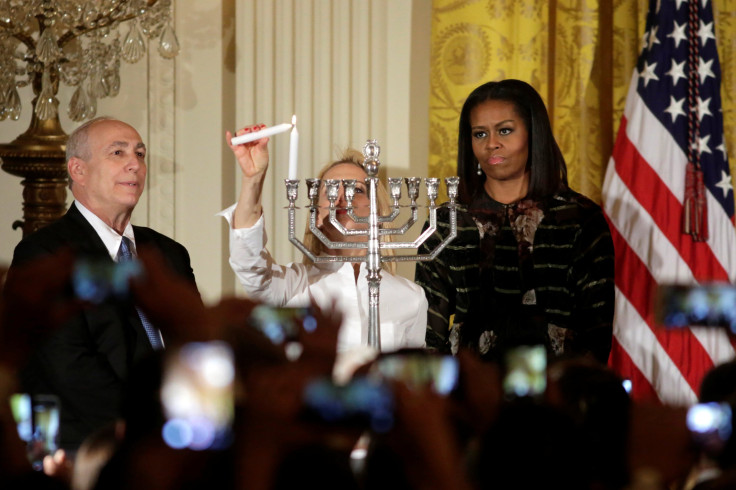Hanukkah 2016 Dates: When Does The Jewish Festival Of Lights Begin, 5 Things You Need To Know

Many Jews across the world will light the first candle on their menorah on Saturday evening to mark the start of the eight days and nights of Hanukkah, or Chanukah. The celebration, which is also known as the” festival of lights,” is often referred to as the Jewish equivalent of Christmas. This year, its start date will coincide with the Christian holiday. Here are five things to know about Hanukkah.
The Date Changes
Hanukkah and Christmas lining up as they do this year is actually a rare occurrence. That’s because the date of Hanukkah is calculated according to the Hebrew calendar. It falls on the 25th day of the Hebrew month of Kislev, the ninth month on the Hebrew calendar. Usually, that means it occurs in December but some years it begins as early as November. In 2017, Hanukkah will commence on the evening of Dec. 12.
Not That Significant Religiously
For those who are not of the Jewish faith, Hanukkah may well be the most famous Jewish holiday. It is easily accessible due to its reputation as the “Jewish version” of Christmas and it has the widely known dreidel spinning-top toy. However, it isn’t actually an important holiday on the Hebrew calendar. Indeed, it doesn’t even appear in the Torah. It was only upon the arrival of Jews in North America in the 19th century that it began to take on significance. Increasingly it took on elements of Christmas, most obviously gift-giving, as a counter-balance to the Christian holiday and a symbol of Jewish identity.
Still A Story Behind It
While it may not be as important as Passover or other Jewish holidays, Hanukkah still has a compelling story behind it. Its origins date back to the 2nd century B.C. when Judea was ruled by Syrian king Antiochus, who outlawed traditional Jewish practices. In response, a group of priests called the Maccabees led an uprising which ended in victory and the rededication of the Second Temple in Jerusalem. To what degree this was a battle for religious freedom is disputed, however. Some modern scholars have contended that it was actually a civil war between the traditional Maccabean Jews and the reform-minded Hellenistic Jews.
Menorah Miracle
There is a reason why the menorah used for Hanukkah has eight branches, plus the middle ninth lamp, as opposed to the regular seven. Once the Second Temple had been rededicated, the Maccabees went to light the Menorah but found only enough olive oil to keep the candles alight for one day. Yet eight days would go by with the flames still flickering, enough time to find fresh supplies. To celebrate what believers claim was a miracle, a candle on the menorah is lit on each of the eight nights of Hanukkah.
Fried Food
As well as the menorah, food also plays its part in Hanukkah celebrations. And for those looking for an excuse to eat fried food, then this is the perfect holiday. Because of the menorah tale, food fried in oil is traditionally eaten on the festival of lights. The most popular foods are potato pancakes called latkes and sufganiot, deep-fried doughnuts.
© Copyright IBTimes 2025. All rights reserved.





















